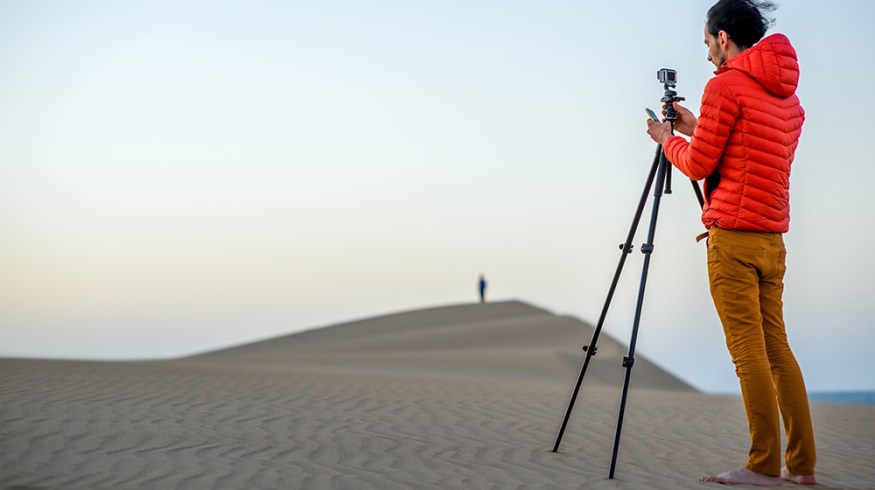
Protect Your Camera From Dirt With Simple Household Items
Here’s how to protect your camera from dirt, dust, and sand with inexpensive items you’ve got sitting around the house.
Images via Shutterstock
David Fincher once said, “If I do my job right in prep, I always feel like the shooting should be boring.” It’s an excellent statement to embody. If every shoot could be ‘boring’ because it has been so well prepped, then a lot more fantastic films would be getting made every year. Unfortunately, that’s not the case for many filmmakers, and as you descend the ladder from professional budget to no-budget, you will have less chance of a dull shoot as more things are going to go wrong.
Preparation in filmmaking is half the battle. The beauty of working on a soundstage or inside is that you will likely have control of everything. When filming outside, that isn’t always the case — especially when it comes to dealing with the wind in a dusty or sandy environment.

A pinch of dust isn’t going to do much other than cause a smear on your images, and it will be an annoyance rather than a certified problem. Dust can quickly be removed in post-production, and physically with a lens pen and the sensor cleaning application found on most DSLRs. Sand and dirt, however, can have a much more detrimental and long-lasting effect on your camera. It can degrade the efficiency of the mechanics, it can scratch your lens, and worst of all, the sensor. A sensor clean isn’t going to rid you of a scratch. It will be back to the repair house if you encounter that dilemma.
Six years ago I once had sand find its way into the middle of my variable ND filter, and to this day, I can still hear the sand grind against the filter.

In the perfect circumstance, you would have housing to protect your gear, whether it be a designated cover or case or even underwater housing (underwater housing works perfectly in sandy conditions). Regrettably, you might be in a circumstance where you do not have professionally designed protective gear available to you, and will have to make do with what you have.
If you ever find yourself in a situation where the sand is starting to blow, or you need to place the camera down into the dirt for a specific shot, this easy-to-follow DIY hack is an excellent way to protect your DSLR. The items needed are more than likely always going to be found on a set, whether it be a no-budget or professional shoot.
You will need a sandwich bag or a plastic bag, a cable tie/elastic band/tape, and screw-on filter. There is no preference for the filter you use, as long as it is cheap and replaceable.
Step 1
Take the sandwich bag and place the camera inside. You want the zip or the tied end to be on top of your camera so you can see the LCD screen and control panel.

Step 2
Very carefully pinch a hole on the front side, and pull it apart just enough so the front of the lens can fit through. You want this gap to be snug. Using the cable tie (or tape), close the hole tight.

Step 3
Place a UV filter or protective filter onto the front to better protect the lens.

Step 4
Shoot away in the dirty/sandy location.

An optional precaution to take: wrap electrical tape around the lens-to-camera connection.
This useful tip cost next to nothing. Although it will limit your function at the control panel (and ultimately devalue all of the work of the camera designers), it will stop dirt and sand from entering your camera. It’s recommended to set your camera settings before placing it into the bag because of the limited functionality, especially with touchscreen LCDs. If you’re aware of a shoot taking place in a sandy location, perhaps look into acquiring professional housing. The above method does have drawbacks and should be used when you have nothing else available.
Do you have any useful hacks that have saved the day? Let us know in the comments.





